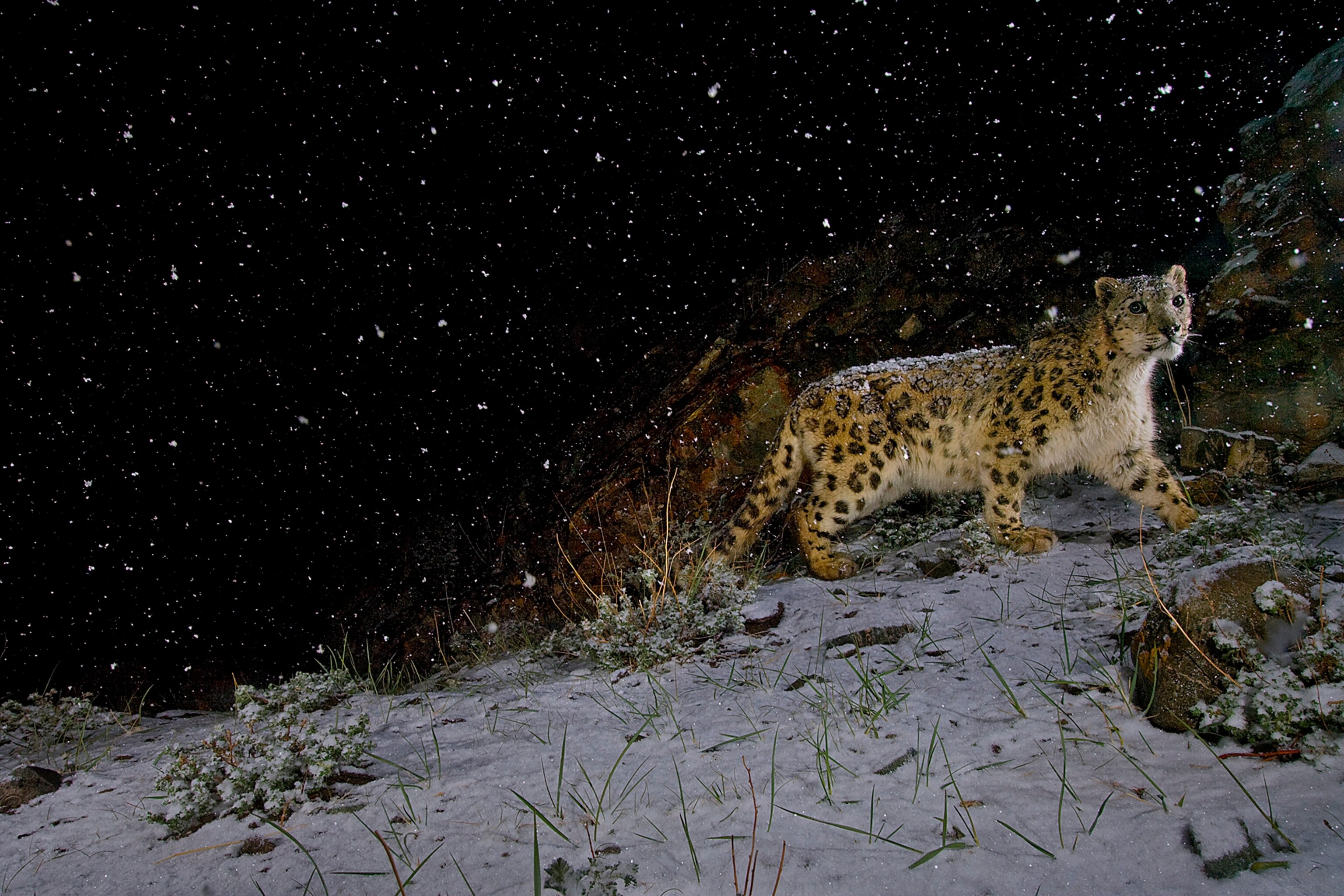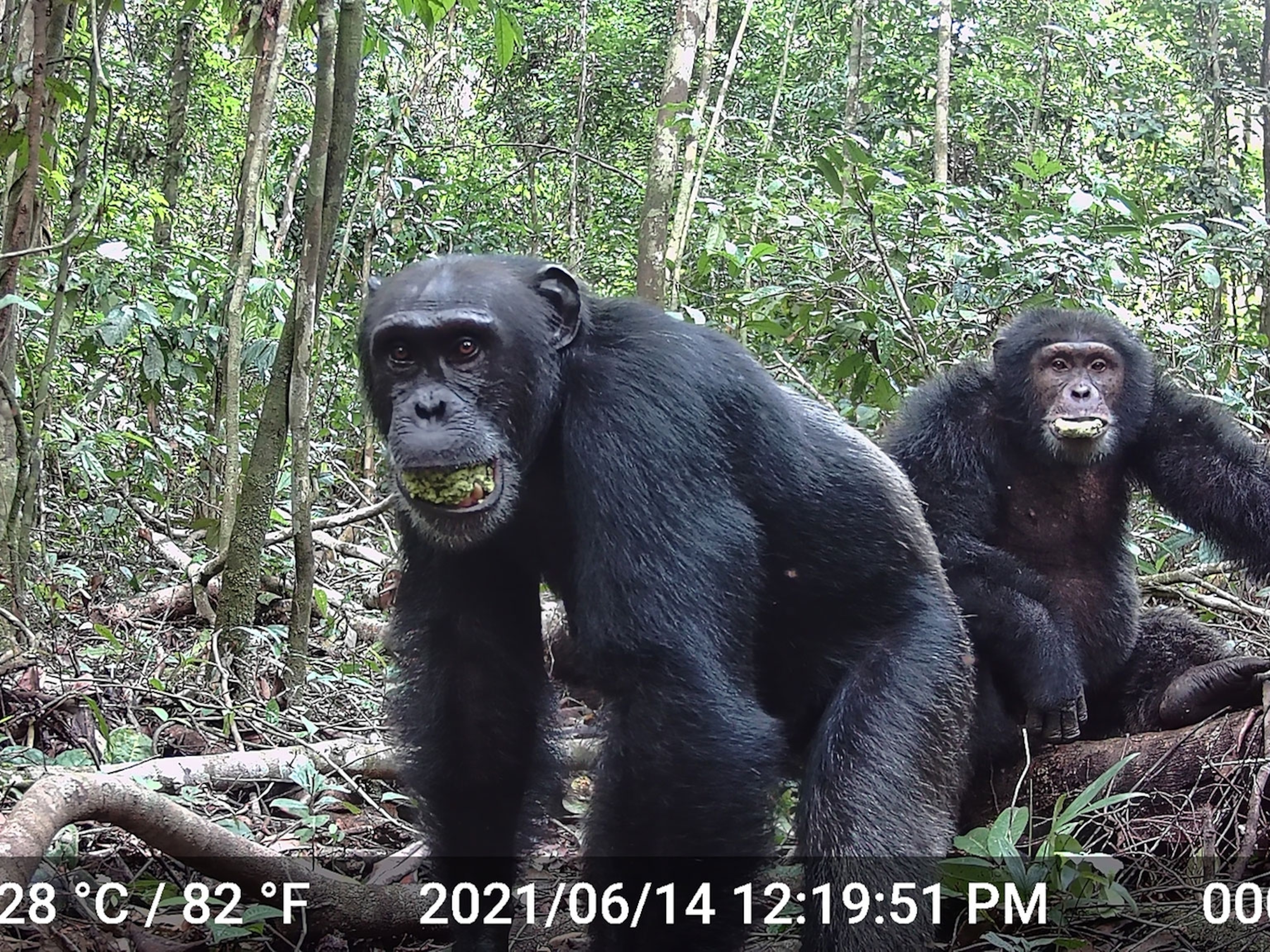
One Snow Leopard Needs a Protected Range Bigger Than Aruba
The big cats' home territories are up to 44 times bigger than previously thought, a new study using GPS collars reveals.
The snow leopard is known as the “ghost of the mountain” for good reason. The big cats are secretive, few in number, and native to craggy, high-altitude habitats of Central Asia that can be treacherous for humans.
Now, technology advances have finally given scientists a solid glimpse into the world of these endangered felines, and led to one of the most robust studies ever conducted.
From 2008 to 2014, researchers working in the Tost Mountains of South Gobi, Mongolia, outfitted 16 snow leopards with GPS collars. The collars logged each cat’s location about four times a day for over a year. (Read about snow leopards in National Geographic magazine.)
The data suggest that the big cats require enormous home ranges, about 80 square miles for males and around 48 square miles for females—44 times larger than earlier estimates. This means a single adult male leopard must roam over an area larger than the Caribbean island of Aruba in search of food and mates, according to the study, published September 21 in the journal Biological Conservation.
“Previous studies had mostly assumed smaller home ranges, and of course that influences everything from population estimates to conservation strategies,” says study leader Örjan Johansson, a Ph.D. student at the Swedish University of Agricultural Sciences, whose data came from an eight-year project funded partly by Snow Leopard Trust, SL Foundation Mongolia, and Panthera.
“These findings underline that we need a lot more information on the snow leopard.”
Big Predators Require Big Spaces
Johansson says he wasn’t surprised by the results: “If anything, I expected that snow leopards would have even larger home ranges,” he says.
That's because, unlike big cats that live in areas of great prey abundance—such as African lions—snow leopards live in 12 mountainous countries where large prey is few and far between. That means the animals might have to roam gargantuan distances between each meal in their search for Siberian ibex, argali sheep, and sometimes domestic goats. (See amazing pictures of snow leopards.)
This last prey item gets the cats into trouble with local herders. When snow leopards kill livestock, people often respond by hunting the predators. The International Union for Conservation of Nature lists retaliatory killings as one of the snow leopard’s main threats. Fewer than 7,000 are left worldwide, according to the IUCN.
The new study also revealed that snow leopards—like most cats—are territorial, and will defend their home turf from other snow leopards of the same sex. So not only are their territories huge, they don't usually overlap.
Taking this new data into account, Johansson and colleagues discovered that 40 percent of the 170 protected areas found across the big cat's range are smaller than the space required by one adult male. (See "How a Hunting Reserve Became a Snow Leopard Sanctuary.")
Even if you cut the new study’s home range estimates in half, just 22 percent of the protected areas could support 15 females, or the number required for a population to withstand the rate at which snow leopards are killed by herders.
“We may have to rethink how much space is needed for a viable snow leopard population,” says Johansson.
Unveiling the Snow Leopard
Independent zoologist Katey Duffey calls the new study’s findings very convincing, and notes how GPS is essential for studying elusive species with expansive ranges.
Previous research was conducted by VHF radio signal, which only works if scientists are able to keep up with the big cats on foot, says Duffey, who partners with the Mongolian Academy of Sciences and Irbis Mongolia Center.
A feat much easier said than done when you’re tracking an animal that can leap up to 50 feet at a time and scale cliffs. GPS technology, which relies upon satellites rather than human endurance, results in much more accurate estimates. (See "Snow Leopards Need To Be Protected ... But How?")
“It’s still a struggle to do snow leopard research, but the wealth of data that we can collect now would have taken decades earlier,” says study leader Johansson.
That makes studies like Johansson’s extremely important in understanding how to conserve the cats, Duffey adds.





